Little Willie the Pearl, Sarah Bernhardt's crown and Tom Petty's car
Also: RIP Jesse Monongye, inlay master.
Hi guys! I’ve been trying to get something together for you, but let me tell ya, there is NOT a lot going on right now. Shoutout to Bonhams for carrying a lot of weight here this time around.
So, anybody want Tom Petty’s 1965 Ford Mustang? It’s up for sale today in the Bonhams Cars Quail Auction in Carmel, CA.
I’m not a huge vintage car person and I’m certainly not a Mustang person (no matter how many times I intone “Ford Mustang, bang” in my head), but man, that is a pretty car. Petty bought it in 2002 and the lot notes state it’s being sold by his wife, so I guess she got it in the acrimonious estate battle with Petty’s daughters from his first marriage.
The car is fully restored and in “excellent running order,” and it’s estimated to sell for $25,000 - $35,000.
Did you know there are natural pearls from Scotland? (You might if you watched Outlander, which I did not.) That beauty above is the Abernethy Pearl, the largest Scottish natural freshwater pearl found in living history. It’s surpassed in size only by the Kellie Pearl, which is set in Britain’s oldest surviving crown, the ca. 1540 Crown of Scotland. (For more on the history of the crown, don’t miss this excellent post from historian Lauren Kiehna, a.k.a. the Court Jeweller.)
The pearl is affectionately known as “Little Willie,” and it was discovered in 1967 in the River Tay by Scottish pearl diver William (Bill) Abernethy. It’s being offered for sale next Wednesday in Edinburgh by Scotland’s oldest auction house, Lyon & Turnbull, in their live auction The Cairncross Collection featuring The Abernethy Pearl.
Bill Abernethy never disclosed the exact location where he found the pearl, fearing pearl hunters would wreak havoc on the river. His dad and uncle had taught him how to fish for a pearl, and he spent his lifetime doing it, developing an almost sixth sense for which mussels would contain pearls. His 2021 obituary — he lived to the age of 96 — is a delight, and in it his friend and former diving colleague Doug Allen says Bill could tell by the shape of their shells exactly which mussels would yield a pearl, so he only needed to harvest a tiny amount, leaving the rest alone.
Scottish river pearls occur naturally in the freshwater pearl mussel Margaritifera margaritifera, and according to the lot essay, it’s thought that only one in every five thousand mussels contains a pearl. They form the same way as any other natural pearl: an intruding grain of sand/dirt/whatever enters the mussel, which then secretes layer after layer of nacre (mother-of-pearl) around the irritant, eventually forming a pearl. Those layers are what give a pearl its luster, which refers to both the reflective surface of the pearl and the subtle glow created by light entering the layers of nacre and reflecting back at the viewer.
Lyon & Turnbull say the Abernethy Pearl may have taken more than 80 years to reach its size of 43.6 grains, and the renowned pearl house Mastoloni compares the quality of its luster to that of Japanese Akoya pearls, which are the best of the best when it comes to luster. They also shout out its perfectly spherical shape, which is rare among natural freshwater pearls.
When asked about finding the Abernethy pearl, the obituary notes that Bill said “he knew there was going to be a pearl inside but it was twice the size he expected. He wrapped it in a dock leaf to prevent it being scratched and held onto it for a while before taking it to the jewellers who were stunned at his find.”
The pearl is estimated to sell for £10,000 - £15,000 ($13,000 - $19,000).
A note about the auction itself: The items being sold come from the collection of Cairncross of Perth, a renowned 154-year-old Scottish jewelry store that sadly closed last year. Scottish freshwater pearl mussels are an endangered species thanks to both poaching and climate change, and this article from the BBC notes that pearl fishing, buying and selling have been banned by the Scottish government since 1998. Cairncross was previously the only jeweler licensed to sell Scottish freshwater pearls (specifically only pearls harvested pre-1998), but it looks like T. Paterson Jewellers, also of Perth, currently has a license to sell. No matter what, this auction is one of the few legit opportunities available to purchase Scottish pearl jewelry.
This sparkly gilt metal, paste stone and pearl crown was designed for French stage actress Sarah Bernhardt’s performance of Medea in 1898. I first wrote about Bernhardt back in 2020, prompted by a killer inkwell she designed as a self-portrait of herself as a Chimera. The woman was phenomenally extra — we’ve all heard the tale of her sleeping in a coffin — but very calculatedly so, embracing all forms of promotion and new technology to create a dramatic public persona that served her career as an actress and artist.
She also basically made the career of the Czech artist Alphonse Mucha. The story goes that she wanted a poster produced quickly to promote an extension of her run in the play Gismonda, but as it was Christmastime, most of the artists in her publishing house were home for the holidays — except for Mucha, who happened to be in the building checking proofs. His boss asked him to quickly create a larger than life poster of the actress, and this is what he made. Bernhardt loved it, promptly buying 4000 copies and signing Mucha to a six-year contract.
Mucha created a poster for Medea a few years later in 1898, and it depicts Bernhardt in a different, more ostentatious crown that’s definitely better suited for a poster than the one above. I’m also compelled to include this other Medea portrait of Bernhardt that Mucha created a little earlier, in 1893:
Again, not the same crown because it’s earlier, but who cares. She’s awesome. The piece, which is a work on paper in pencil, watercolor & bodycolor (gouache) titled “Project for Sarah Bernhardt in ‘Médée,’” supposedly sold at Sotheby’s London in March 1996. I couldn’t find it on their site, but whoever’s uploading past auctions probably hasn’t gotten to it yet.
Anyway, the crown above has an adjustable strap and center brace and is stamped “L. Lagarde/Paris.” The provenance notes that the piece was bought directly from Bernhardt’s estate and has been passed down in a single collection since then. It’s included in The Tastemaker, a live auction at Freeman's | Hindman in Philadelphia also on August 21; estimate is $3,000 - $5,000.
This 18k gold, peridot and smoky quartz ring caught my eye in the Bonhams Sydney Jewels | Spring Edit online auction ending August 23. The foresty pine tree motif jumped out at me as I sit here yearning for lovely crispy fall weather, and the designer, Mousson, sounded familiar. But when I went to investigate, I realized I didn’t know them at all. It seems they’re Russian but based in Thailand, and they enthusiastically embrace enamel, which is always going to get my attention. I particularly love this 18k yellow gold bangle bracelet with a plain brushed surface and a patterned enamel interior — a secret known only to the wearer.
Speaking of bangles — this bracelet was designed by renowned architect Frank Gehry for Tiffany & Co. I believe it’s part of a collection they released in 2006, because it has the same lines and planes of the other pieces, but I’ve never seen one in this material. Probably because it was a limited edition, but mostly because it’s porcelain. “Porcelain” and “bangle” are both perfectly fine things but put them together and disaster is sure to strike. Or maybe he used some kind of super-strong porcelain, if that even exists? I don’t know. Gehry’s collection also contained similar pieces made of reinforced concrete, so my man Frank was definitely pushing Tiffany’s limits. I don’t think I’ve seen any of the concrete ones come up on the secondary market, either.
So anyway, the bangle is made of white porcelain with a blue and gray varnish that was hand-painted by Gehry himself, as is noted in the signature on the interior of the piece. It’s also included in that Sydney Jewels auction and is estimated at AU$2,000 - AU$4,000, or $1,300 - $2,600 in US dollars.
I’m very sorry to say that Jesse Monongye (or Monongya), the renowned Navajo/Hopi jeweler, passed away last week at the age of 71. Jesse had a fascinating life story: He was adopted and brought up in New Mexico, where he was recruited by the Marines and sent to serve in Vietnam. When he returned, a Navajo FBI agent helped him find his biological father, who turned out to be the famous Hopi silversmith Preston Monongye.
Jesse watched his father work, but he had no interest in becoming a jeweler himself until one night, when he said his mother came to him in a dream:
I had a dream that my mother found me — I never knew my mother either — but in my dream she found me and told me that I would become a famous jeweler. It was like a lightning bolt hit me. And I looked at my dad’s work again, and it seemed like I knew what I was doing already, right off the bat. So I worked with him a while, and then I started entering competitions, and I won…beat my father and some of the other big-name guys. So that's how it started.
Jesse was renowned for his inlay work, which often depicted the night sky. The gold cuff bracelet above, called “A Day in the Life of Monument Valley,” is an excellent example of his skill in using materials like coral, turquoise, lapis lazuli, Acoma jet and gold-lip pearl oyster to represent the landscape and cosmos. The center of the bracelet is set with a large opal in a raised gold bezel.
The piece is included in the Bonhams Skinner Modern Native American Art and Jewelry online auction running from October 12-23. (This is the only piece they’ve posted so far.) The estimate is $12,000 - $18,000, but I’m sure the news of his death will have an effect on the sale price.
The September 10th Pushing Boundaries: Ingenuity from the Paul G. Allen Collection auction at Christie’s New York has an interesting mix of science, history and tech-related items, including Einstein’s 1939 letter to FDR, warning him of the German nuclear threat (estimate: $4 - $6 million), an Enigma machine and an Atari Pong home console.
I’m obsessed with that thing pictured above, though. It’s a ca. 18671 Malling-Hansen Writing Ball — the world’s first commercially produced typewriter — and it was invented in 1865 by Hans Rasmus Malling-Hansen, a Danish pastor and principal of the Royal Institute for the Deaf in Copenhagen. According to Christie’s, he “developed the Writing Ball with the primary aim of improving the efficiency and speed of written communication specifically targeted at those with disabilities.”
Malling-Hansen designed the writing ball with vowels on one side and consonants on the other, in a way that deliberately minimized finger movement to avoid typing fatigue. Apparently it worked, “reportedly enabling typists to reach speeds of up to 800 characters per minute,” according to the lot notes. (Side note: German philosopher Friedrich Nietzsche owned one of these and hated it, but it’s believed that the one he had was damaged in transit and the mechanic he hired to fix it only made it worse.) I can’t find any video of one actually working, but there is an old CAD illustration on YouTube.
Sadly, the writing ball didn’t catch on, despite being a supremely efficient machine. Manufacturing was complicated and expensive, so Malling-Hansen was only able to produce around 180 of them before he sadly passed away at age 55, and all production stopped. By then it was already being surpassed by typewriters using the QWERTY keyboard layout we still use today.
The piece is estimated at $50,000 – $80,000.
Also, there’s a phenomenal collection of fairground art coming up for sale in early September at Bonhams London. It’s worth rooting through to see all the beautiful carousel animals and vintage games and whatnot, but click on this particular link at your own peril, because it’s the most horrifying clown sign I’ve ever seen. “FUN!”
Have a good weekend, everybody!
Love, M xx
I’m not sure about that date they’re giving it — everything I’m seeing online makes me think it’s more from the late 1870s, but what the hell do I know.




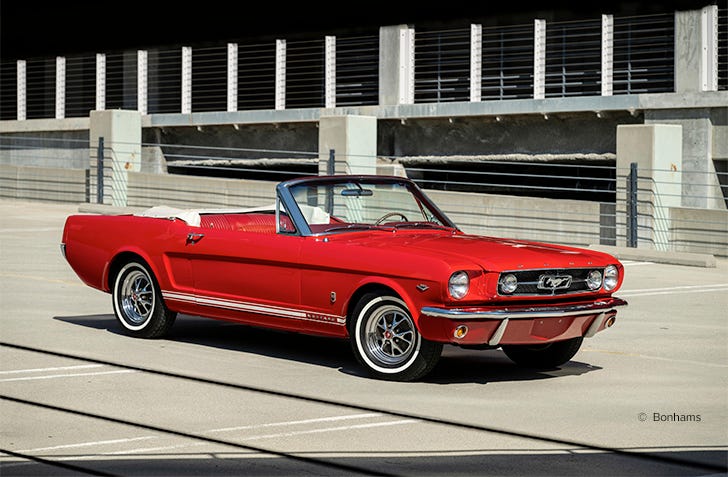
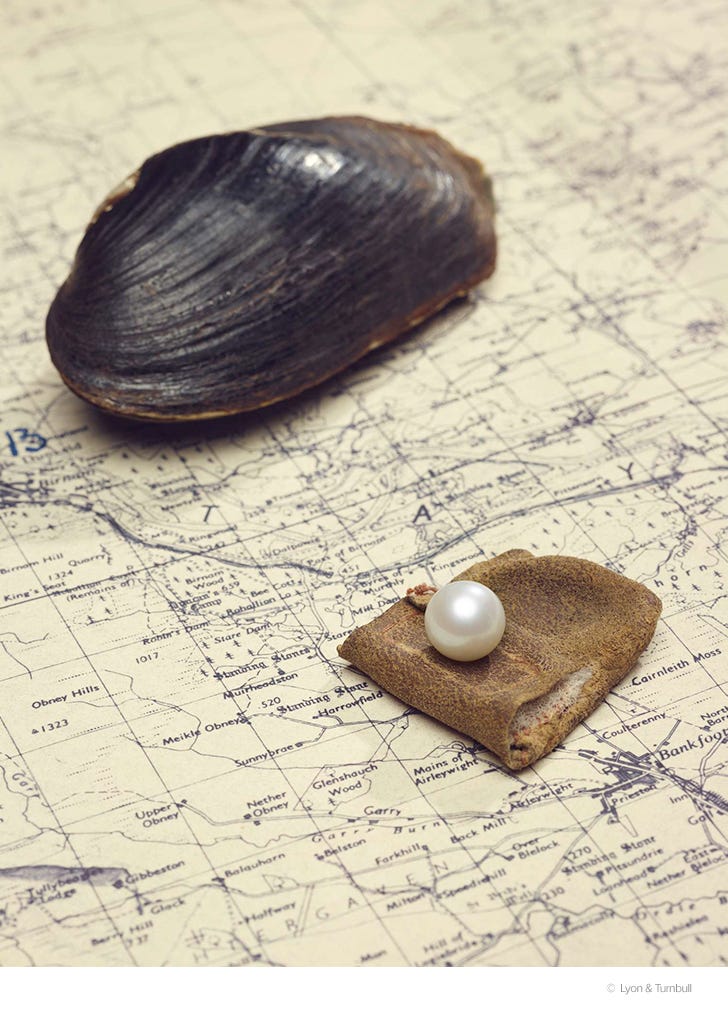
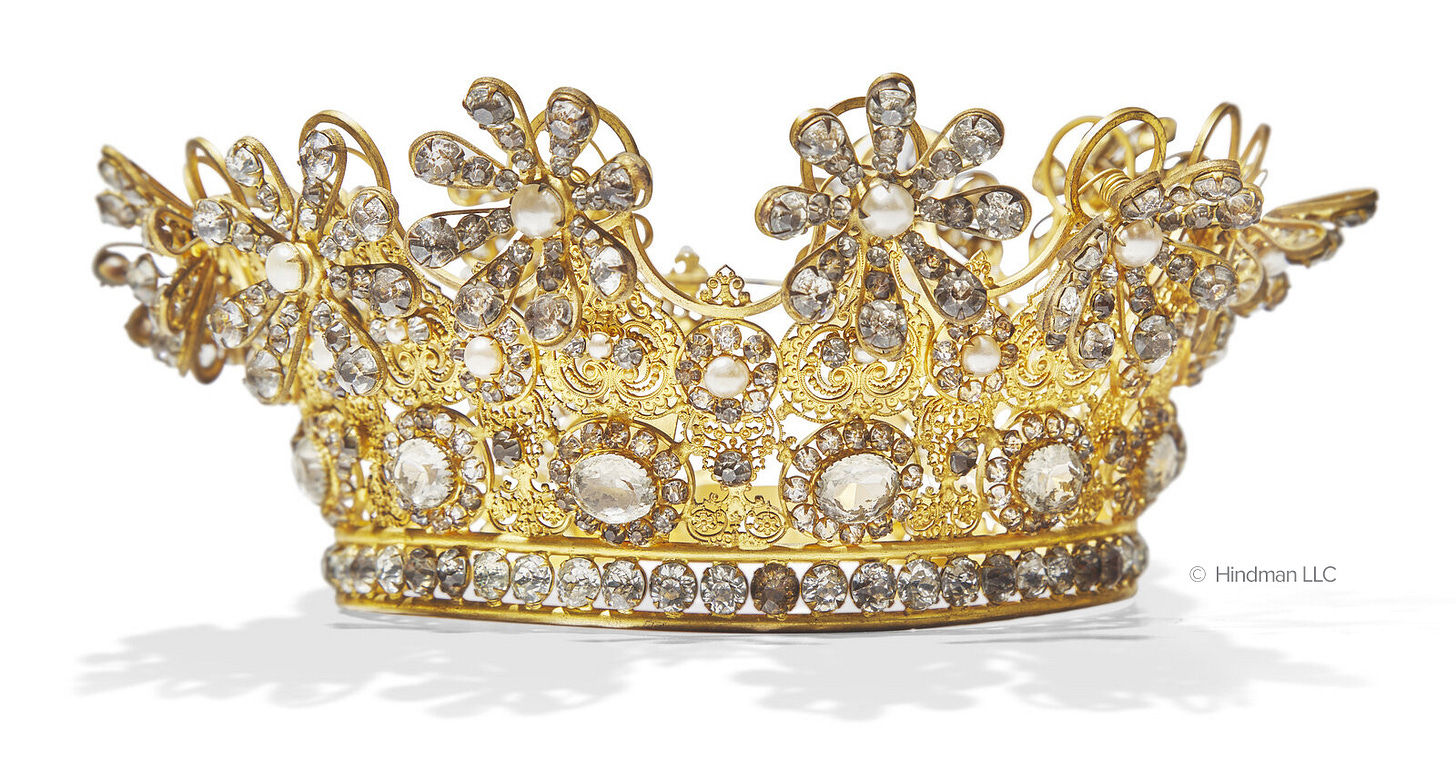
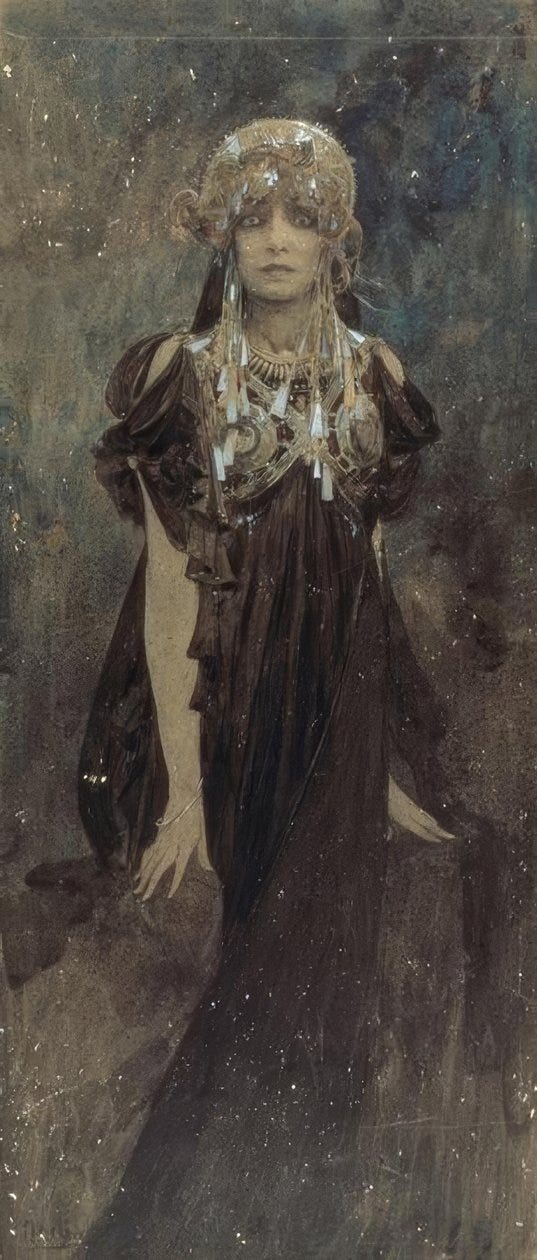
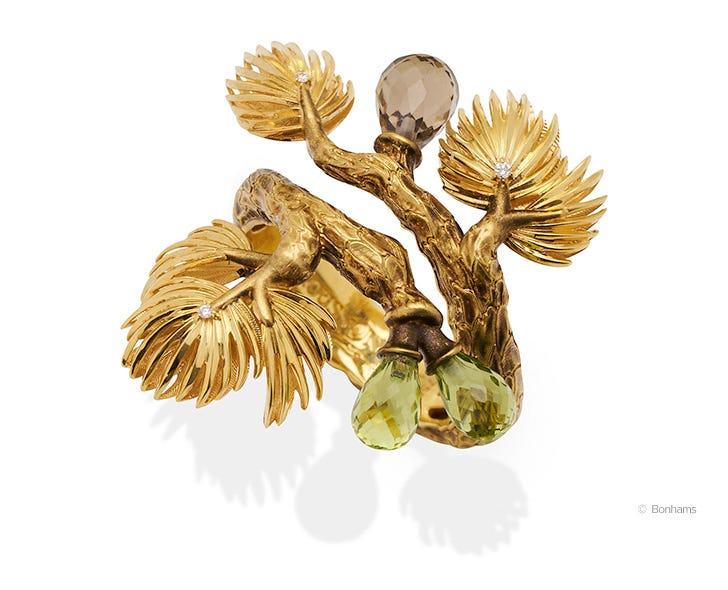
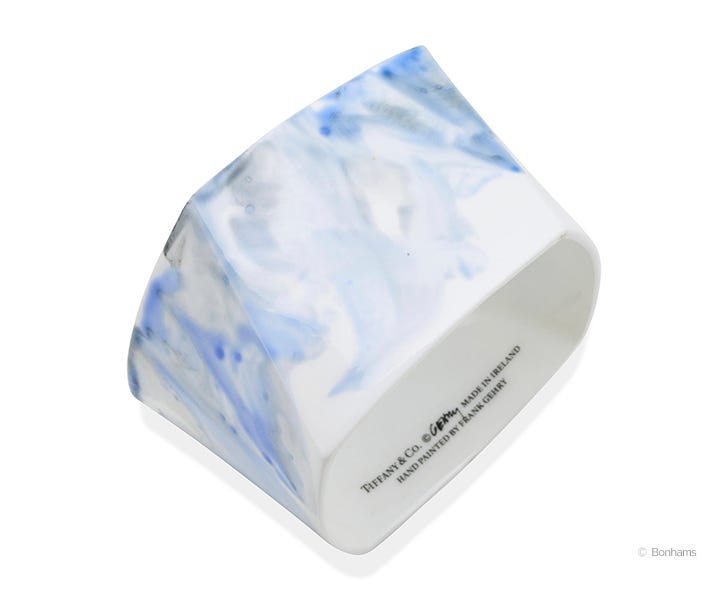
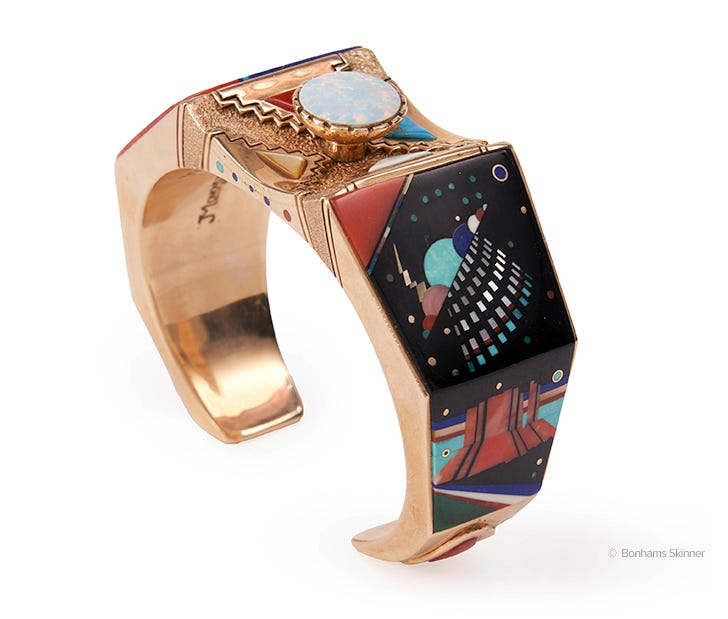
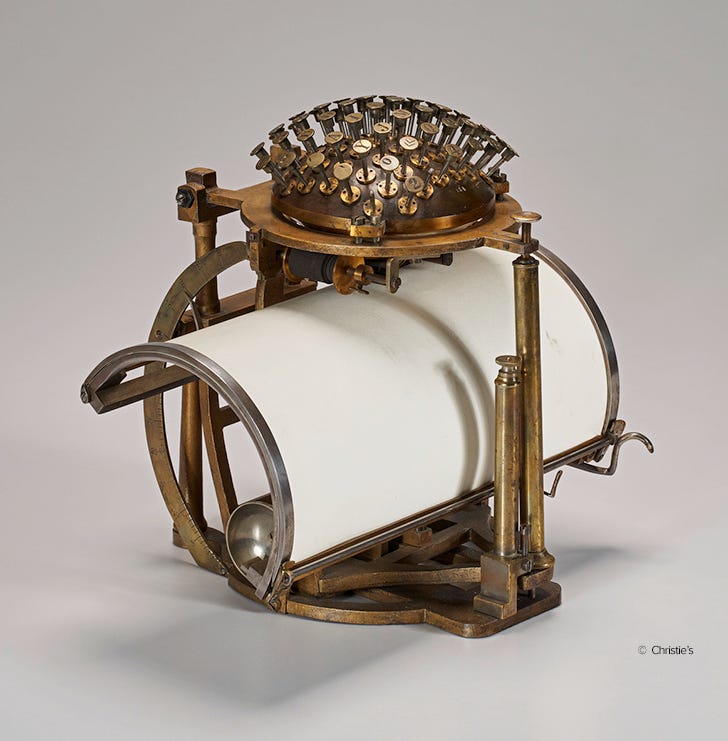
That pearl! I'm glad he kept the location a secret.
Also happy that I'm not the only one who adds "bang!" when I hear "Ford Mustang". That's the song that made me a Gainsbourg fan.
Magnificent. Sending to my friend who is travelling in Scotland right now!